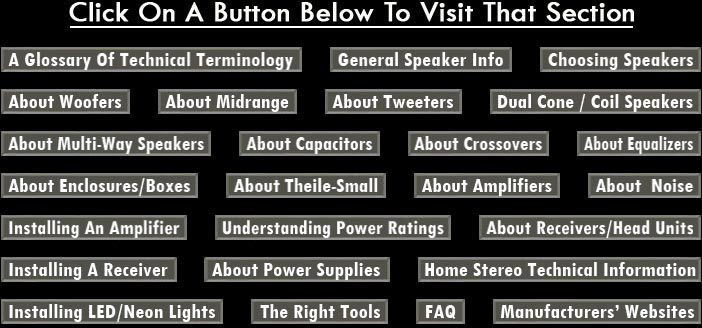


Q
The ratio of reactance to resistance in a series circuit, or the ratio of resistance to reactance in a parallel circuit.
Qes
The Q of a speaker driver at its free air resonance considering only its electrical losses.
Qms
The Q
of a speaker driver at its free air resonance considering only its mechanical losses
Qtc
The total Q or resistance of a woofer and sealed enclosure at the systemas resonance frequency, considering all resistive losses. A Qtc of .7 has smoothest response and the lowest resonant frequency response. A Qtc of above 1.1 should only be used by those who prefer a "boomy" response.
QTS
The total resistance in a series or parallel circuit. This takes into account all Driver resistances, both electrical and mechanical.
Quick Release (terminal)
A means for securing a wire conductor to a terminal connector that permits easy attachment and removal. In the usual form, this will involve a spring-loaded clip, which needs only to be pressed to either secure or detach a cable end.
Quantization
The process of converting, or digitizing, the almost infinitely variable amplitude of an analog waveform to one of a finite series of discrete levels. Performed by the A/D converter.
Quantization error
Error resulting from quantizing an analog waveform to a discrete level. In general the longer the word length, the less the error.
Quasi-Parametric
A type of equalizer. A quasi-parametric (also known as "semi-parametric") EQ will allow control over the frequency and gain of each band of equalization, but not the number of frequencies controlled (bandwidth). The midrange EQs on mixing consoles are often quasi-parametric. More flexible in some ways than a graphic EQ, a quasi-parametric EQ does not offer the full range of adjustment found in a fully parametric design.
Quiescent Current
The term given to describe the amount of current consumed by a circuit when it is not performing any work (sometimes referred to as standby current).















